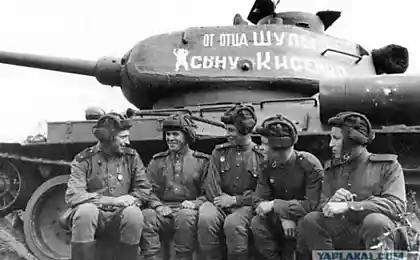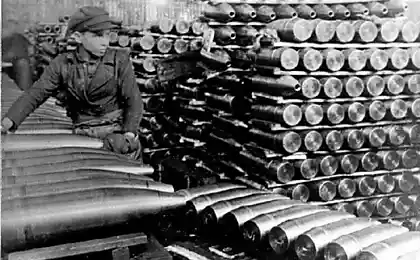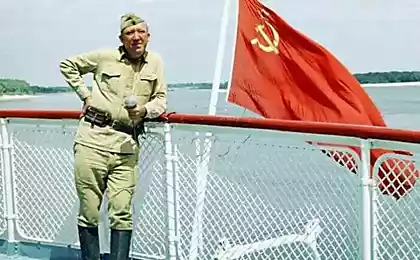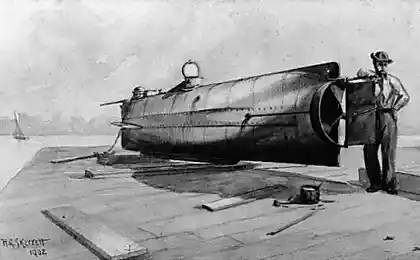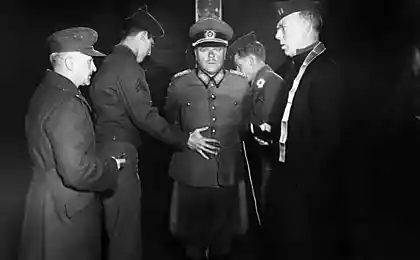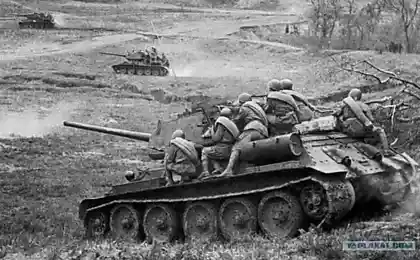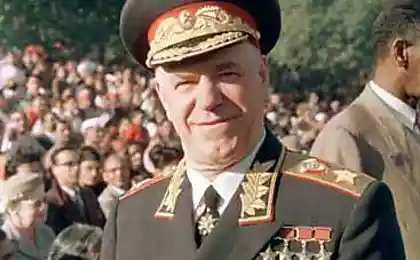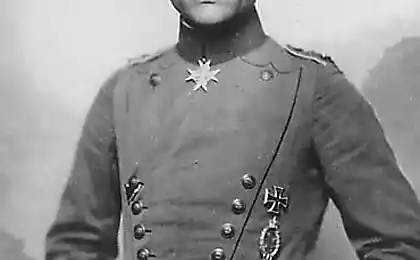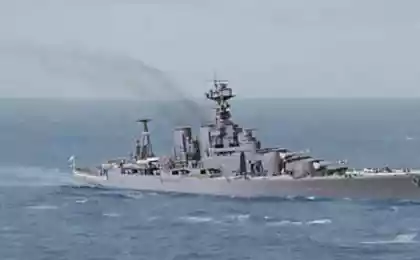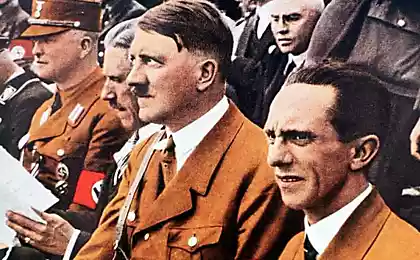937
Top Aces World War II!
Photos of pilots and their combat performance (some statistics and additional data).
Soviet pilots, the Allies, German pilots.

Soviet pilots
1.
Kozhedub Ivan Nikitich: To 62 German aircraft shot down officially INKozhedub during World War II, should be added and 2 American fighter downed it at the end of the war. In April 1945 barrage queue Kozhedub drove a couple of German fighters from the American B-17, but was attacked by fighter cover, opened fire from long range. On the flip Kozhedub swiftly attacked the extreme machine. He puffed and went with a decrease in the direction of our troops (the pilot of this machine soon jumped with a parachute and landed safely) .Vtoroe photo - his plane. - La-7 INKozhedub, 176th GvIAP, spring 1945)
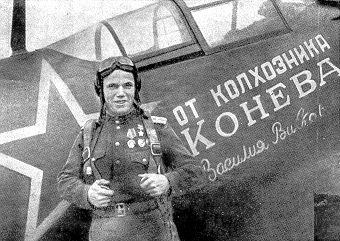
2. Pokryshkin Alexander: May 24 Pokryshkin was awarded the title Hero of the Soviet Union. By this time in his account already appeared 25 downed enemy aircraft. Three months later, he was awarded the second Gold Star. Battling with the Luftwaffe in the south of Ukraine, Pokryshkin chalked up another 18 "Junkers", including two high-altitude reconnaissance. In November 1943, using false tanks, he arranged the hunt for Ju.52, acting on the air communication over the Black Sea. In four of departure under changeable weather Marine Soviet pilot sent to the bottom of five three-engine transport.

In May 1944, Pokryshkina appointed commander of the 9th Guards Air Division, but despite the high office he has not stopped sorties, won the next year until the end of seven wins. Fighting activities of the famous ace of the Soviet Union ended in Berlin. During the war he made 650 sorties, conducted 156 air battles, shot down 59 enemy planes in person and 6 - in the group. (pictured below his plane)

Gulayev Nikolai: Total War for the Major Gulayev conducted 240 sorties, 69 air battles personally shot down 57 and in group 3 enemy planes. His "performance", 4 departure to built, has become one of the highest in the Soviet fighter aircraft.
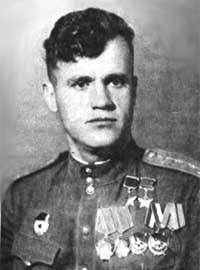
...
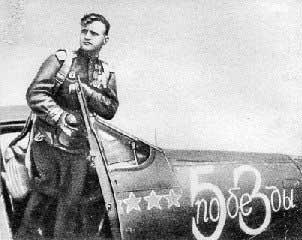
Kirill Evstigneev A.: During the war, he made about 300 sorties, conducted more than 120 air battles personally shot down 52 and in the group - 3 enemy aircraft. "Pilot - flint" - so spoke of him Ivan Kozhedub, while serving with Evstigneev in the same regiment.
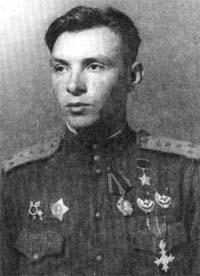
...

Dmitry Borisovich Glinka: After nearly a six-month leave, study and replenishment pilots 100th GIAP participated in Iasi operation. In early May, in a battle where 12 "Cobra" attack about fifty S-87, Hlinka shot down three bombers, and just a week of fighting here destroyed 6 enemy aircraft.
When the flight Li-2, it was a disaster: the aircraft struck the top of the mountain. His teammates saved by the fact that they are located in xvoste machines - sleeping on the airplane covers. All other passengers and crew were killed. As a result of the accident he received severe injuries: a few days was unconscious. He was discharged from the hospital in two months and at the Lvov-Sandomierz operation managed to destroy nine German machines. In the battle for Berlin, he shot down three aircraft in one day, and his last victory was gained by April 18, 1945, at point blank range, from 30 meters, shooting the PV-190.
Total for the war, he spent about 300 sorties, 100 air battles personally shot down 50 enemy aircraft, including 9 in the Yak-1, and the rest - to the "Cobra".
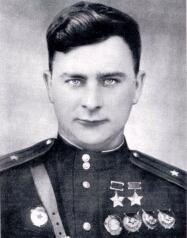
ALLIES
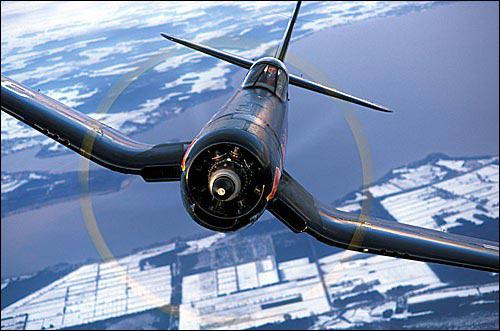
Richard Ira Bong "Dick" (USA). In late 1944, American ace reappeared at the front and just 30 sorties brought his score to 40 victories. In December, he again went to the US and became a test pilot. Unfortunately, that his ka Riera did not last long, and in August 1945, he was killed when testing a new jet F-80s "Shuting Star." Shortly after take-off engine failure of this machine, and Bong could not leave her with a parachute.

...
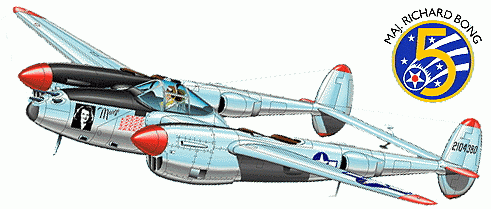
James Johnson "Johnny" (England): In March 1943, was promoted, becoming a Canadian to command a wing, armed all the same "Spitfires", but modification Mk.IX. At this point in his account was already 14 personal victories and won by 5 in the group. He took an active part in the landing at Normandy, commanding the 144th Wing.
The war ended with 34 personal and group 7 victory in the air
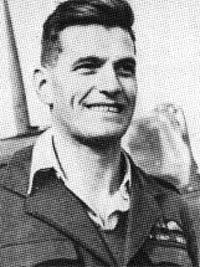
...
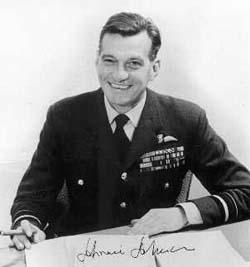
Major Thomas McGuire (US): McGuire died January 7, 1945 on the island of Los Negros in the age of 24, with 17 high awards and Congressional Medal of Honor. He scored 38 aerial victories for 17 months. To commemorate his contribution Air Force Base, the US Air Force "Fort Dix" in Raystaun, New Jersey called "Air Base McGuire."
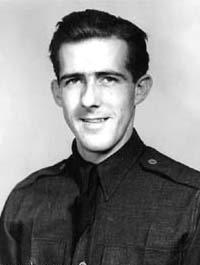
...

Kloosterman Pierre (France): The war ended, Colonel Aviation, at the age of 24 years. In total, he scored 33 aerial victories, including 19 FW 190s and Bf 109s 7, moreover, destroyed 30 aircraft on the ground, 72 engine, 225 trucks. Within three years he made 432 sorties and flown 2,000 hours.
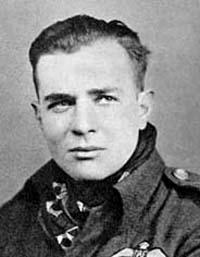
...

In short, I again made hill, but then he had already opened fire at an angle of pre-emption 90 & quot ;. Needless to say, I was lucky twice, and now he finally landed where it is necessary, I mean horrible! I heard an explosion and immediately felt like my leg is filled with lead. Plummeted engine speed. I remember I said, "That's the devil!" Then, abruptly dove. I was afraid to look at his leg. I'm afraid if I saw blood, or something like that, it just would have lost consciousness. In general, I did not go there to watch & quot ;. Gabreski that time disappeared into the cloud and escaped death, then even managed to nearly dry tanks reach its airfield. During the war he shot down 28 aircraft, including 21 single-engine fighter. However, July 20, 1944 and his plane was hit by flak near Koblenz, but Gabreski was unharmed, although he was captured.
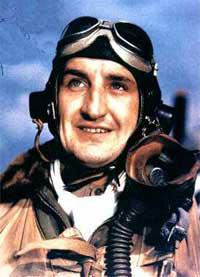
After the war Gabreski stayed in the US Air Force and chalked up six MiG-15 during the fighting in Korea. He died January 31, 2002 at the age of 83 years.
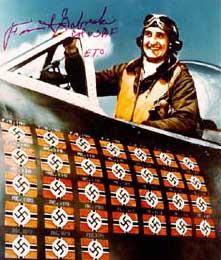
German pilots
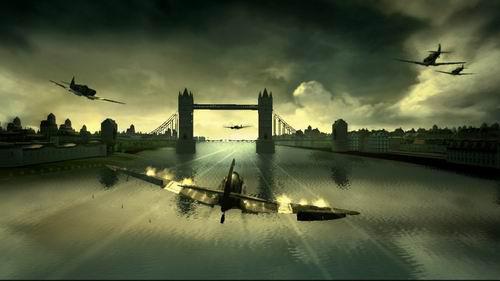
All in all at Hartman 352 aerial victories were registered, 260 of them - on the fighters. It flies exclusively on Bf 109G and spoke about it this way: "It was a very maneuverable aircraft and also easy to manage. He picked up speed very quickly, especially if the front of this little dive. During aerobatics at the 109th could safely go into a tailspin, and then easily get out of it. The only problem was the rise. The plane had a very powerful engine and narrow gauge chassis. If too early to lift off the ground, the machine could be deployed to ninety degrees. Because of these failures ups we've lost a lot of good pilots ».
In May 1945, Erich Hartmann, along with the remnants of the group surrendered to the American tank units, which, in turn, transferred it to the Soviet command. After serving 10 years in Russian prisons and camps, Hartman returned to his home in the arms of his beloved wife Ursula, love and tenderness for which warmed his soul during the ordeal and helped him overcome many obstacles.
Record Erich Hartmann would never be beaten. There are few in the history of aircraft parts, lost one of its members 352 aircraft, and besides - from guns and machine guns of a single fighter pilot!

Hans-Joachim Marseyl: Final result Marseylya - 158 victories, 151 of which was won in the fighting in the deserts of Africa (101 Curtiss P-40, 30 "Hurricane", 16 "Spitfires" and four twin-engine bomber).

Gerhard Barkhorn: In May 1944, with 273 victories on the account, Barkhorn returned to their base. Pretty tired, he did not see the attacker behind the Russian fighter and came under fire from enemy machine guns Barkhorn managed to escape, but for four long months, he was out of action. After returning to JG 52, he brought the score up to 301 personal victories, and then was transferred to the Western Front and was appointed commander of 6th Squadron. Since success in aerial combat, he no longer had. Enrollment in the division soon JV 44 Galland, Barkhorn learned to fly on a jet Me 262. But in the second sortie aircraft engine Barkhorn refused and was seriously injured in a crash during an emergency landing.
After the war, German ace "2 returned to fly as part of the new Air Force. In the mid 60s, during testing of the aircraft vertical takeoff and landing, he "dropped" the "Kestrel" (the predecessor of "Harrier"). When wounded Barkhorn pulled from wrecked car, he muttered through the power of "302 th!"
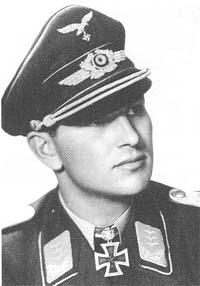
...
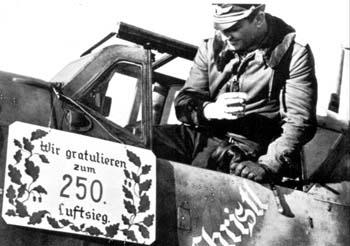
Walter Nowotny: Nowotny scored his first victory in July 1941, but "rock" it is quite slow and it took more than a year before he shot down 50 enemy aircraft. The growth rate of his victories increased in 1943, and in June, he celebrated his hundredth victory. Subsequent Nowotny shot down 100 aircraft in just 72 days, t. E. In less than two and a half months, and by that time occupied the fourth place in the list of German aces. October 14, he was the first among the Luftwaffe pilots reached the mark of 250 aerial victories. Then he shot down five planes, after which he was transferred to the training part. In July 1944, Nowotny again took part in the fighting in the "Kommando Nowotny," flying on a jet Me 262. It joined by only three victories before he was killed in battle on Nov. 8, 1944.
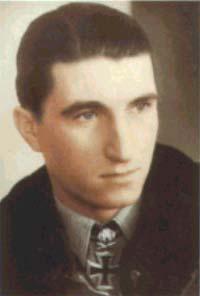
...
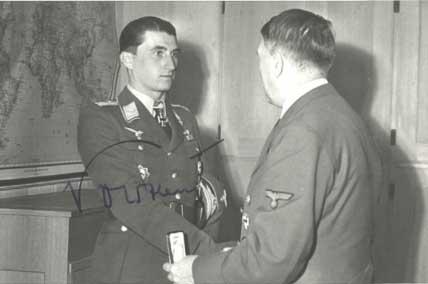
Rudorfer Erich: Erich Rudorfer (Erich Rudorffer). - Total wins - 222 (136 - Eastern Front, 26 - North Africa, France 60, "Battle of Britain" and the Western Front, including 10 4-engine bomber, 12 per Me.262). The first battle in France, spring 1940. Total flights: more than 1000. He was awarded the Knight's Cross with Oak Leaves and Swords.

hence

Source:
Soviet pilots, the Allies, German pilots.

Soviet pilots
1.
Kozhedub Ivan Nikitich: To 62 German aircraft shot down officially INKozhedub during World War II, should be added and 2 American fighter downed it at the end of the war. In April 1945 barrage queue Kozhedub drove a couple of German fighters from the American B-17, but was attacked by fighter cover, opened fire from long range. On the flip Kozhedub swiftly attacked the extreme machine. He puffed and went with a decrease in the direction of our troops (the pilot of this machine soon jumped with a parachute and landed safely) .Vtoroe photo - his plane. - La-7 INKozhedub, 176th GvIAP, spring 1945)

2. Pokryshkin Alexander: May 24 Pokryshkin was awarded the title Hero of the Soviet Union. By this time in his account already appeared 25 downed enemy aircraft. Three months later, he was awarded the second Gold Star. Battling with the Luftwaffe in the south of Ukraine, Pokryshkin chalked up another 18 "Junkers", including two high-altitude reconnaissance. In November 1943, using false tanks, he arranged the hunt for Ju.52, acting on the air communication over the Black Sea. In four of departure under changeable weather Marine Soviet pilot sent to the bottom of five three-engine transport.

In May 1944, Pokryshkina appointed commander of the 9th Guards Air Division, but despite the high office he has not stopped sorties, won the next year until the end of seven wins. Fighting activities of the famous ace of the Soviet Union ended in Berlin. During the war he made 650 sorties, conducted 156 air battles, shot down 59 enemy planes in person and 6 - in the group. (pictured below his plane)

Gulayev Nikolai: Total War for the Major Gulayev conducted 240 sorties, 69 air battles personally shot down 57 and in group 3 enemy planes. His "performance", 4 departure to built, has become one of the highest in the Soviet fighter aircraft.

...

Kirill Evstigneev A.: During the war, he made about 300 sorties, conducted more than 120 air battles personally shot down 52 and in the group - 3 enemy aircraft. "Pilot - flint" - so spoke of him Ivan Kozhedub, while serving with Evstigneev in the same regiment.

...

Dmitry Borisovich Glinka: After nearly a six-month leave, study and replenishment pilots 100th GIAP participated in Iasi operation. In early May, in a battle where 12 "Cobra" attack about fifty S-87, Hlinka shot down three bombers, and just a week of fighting here destroyed 6 enemy aircraft.
When the flight Li-2, it was a disaster: the aircraft struck the top of the mountain. His teammates saved by the fact that they are located in xvoste machines - sleeping on the airplane covers. All other passengers and crew were killed. As a result of the accident he received severe injuries: a few days was unconscious. He was discharged from the hospital in two months and at the Lvov-Sandomierz operation managed to destroy nine German machines. In the battle for Berlin, he shot down three aircraft in one day, and his last victory was gained by April 18, 1945, at point blank range, from 30 meters, shooting the PV-190.
Total for the war, he spent about 300 sorties, 100 air battles personally shot down 50 enemy aircraft, including 9 in the Yak-1, and the rest - to the "Cobra".

ALLIES

Richard Ira Bong "Dick" (USA). In late 1944, American ace reappeared at the front and just 30 sorties brought his score to 40 victories. In December, he again went to the US and became a test pilot. Unfortunately, that his ka Riera did not last long, and in August 1945, he was killed when testing a new jet F-80s "Shuting Star." Shortly after take-off engine failure of this machine, and Bong could not leave her with a parachute.

...

James Johnson "Johnny" (England): In March 1943, was promoted, becoming a Canadian to command a wing, armed all the same "Spitfires", but modification Mk.IX. At this point in his account was already 14 personal victories and won by 5 in the group. He took an active part in the landing at Normandy, commanding the 144th Wing.
The war ended with 34 personal and group 7 victory in the air

...

Major Thomas McGuire (US): McGuire died January 7, 1945 on the island of Los Negros in the age of 24, with 17 high awards and Congressional Medal of Honor. He scored 38 aerial victories for 17 months. To commemorate his contribution Air Force Base, the US Air Force "Fort Dix" in Raystaun, New Jersey called "Air Base McGuire."

...

Kloosterman Pierre (France): The war ended, Colonel Aviation, at the age of 24 years. In total, he scored 33 aerial victories, including 19 FW 190s and Bf 109s 7, moreover, destroyed 30 aircraft on the ground, 72 engine, 225 trucks. Within three years he made 432 sorties and flown 2,000 hours.

...

In short, I again made hill, but then he had already opened fire at an angle of pre-emption 90 & quot ;. Needless to say, I was lucky twice, and now he finally landed where it is necessary, I mean horrible! I heard an explosion and immediately felt like my leg is filled with lead. Plummeted engine speed. I remember I said, "That's the devil!" Then, abruptly dove. I was afraid to look at his leg. I'm afraid if I saw blood, or something like that, it just would have lost consciousness. In general, I did not go there to watch & quot ;. Gabreski that time disappeared into the cloud and escaped death, then even managed to nearly dry tanks reach its airfield. During the war he shot down 28 aircraft, including 21 single-engine fighter. However, July 20, 1944 and his plane was hit by flak near Koblenz, but Gabreski was unharmed, although he was captured.

After the war Gabreski stayed in the US Air Force and chalked up six MiG-15 during the fighting in Korea. He died January 31, 2002 at the age of 83 years.

German pilots

All in all at Hartman 352 aerial victories were registered, 260 of them - on the fighters. It flies exclusively on Bf 109G and spoke about it this way: "It was a very maneuverable aircraft and also easy to manage. He picked up speed very quickly, especially if the front of this little dive. During aerobatics at the 109th could safely go into a tailspin, and then easily get out of it. The only problem was the rise. The plane had a very powerful engine and narrow gauge chassis. If too early to lift off the ground, the machine could be deployed to ninety degrees. Because of these failures ups we've lost a lot of good pilots ».
In May 1945, Erich Hartmann, along with the remnants of the group surrendered to the American tank units, which, in turn, transferred it to the Soviet command. After serving 10 years in Russian prisons and camps, Hartman returned to his home in the arms of his beloved wife Ursula, love and tenderness for which warmed his soul during the ordeal and helped him overcome many obstacles.
Record Erich Hartmann would never be beaten. There are few in the history of aircraft parts, lost one of its members 352 aircraft, and besides - from guns and machine guns of a single fighter pilot!

Hans-Joachim Marseyl: Final result Marseylya - 158 victories, 151 of which was won in the fighting in the deserts of Africa (101 Curtiss P-40, 30 "Hurricane", 16 "Spitfires" and four twin-engine bomber).

Gerhard Barkhorn: In May 1944, with 273 victories on the account, Barkhorn returned to their base. Pretty tired, he did not see the attacker behind the Russian fighter and came under fire from enemy machine guns Barkhorn managed to escape, but for four long months, he was out of action. After returning to JG 52, he brought the score up to 301 personal victories, and then was transferred to the Western Front and was appointed commander of 6th Squadron. Since success in aerial combat, he no longer had. Enrollment in the division soon JV 44 Galland, Barkhorn learned to fly on a jet Me 262. But in the second sortie aircraft engine Barkhorn refused and was seriously injured in a crash during an emergency landing.
After the war, German ace "2 returned to fly as part of the new Air Force. In the mid 60s, during testing of the aircraft vertical takeoff and landing, he "dropped" the "Kestrel" (the predecessor of "Harrier"). When wounded Barkhorn pulled from wrecked car, he muttered through the power of "302 th!"

...

Walter Nowotny: Nowotny scored his first victory in July 1941, but "rock" it is quite slow and it took more than a year before he shot down 50 enemy aircraft. The growth rate of his victories increased in 1943, and in June, he celebrated his hundredth victory. Subsequent Nowotny shot down 100 aircraft in just 72 days, t. E. In less than two and a half months, and by that time occupied the fourth place in the list of German aces. October 14, he was the first among the Luftwaffe pilots reached the mark of 250 aerial victories. Then he shot down five planes, after which he was transferred to the training part. In July 1944, Nowotny again took part in the fighting in the "Kommando Nowotny," flying on a jet Me 262. It joined by only three victories before he was killed in battle on Nov. 8, 1944.

...

Rudorfer Erich: Erich Rudorfer (Erich Rudorffer). - Total wins - 222 (136 - Eastern Front, 26 - North Africa, France 60, "Battle of Britain" and the Western Front, including 10 4-engine bomber, 12 per Me.262). The first battle in France, spring 1940. Total flights: more than 1000. He was awarded the Knight's Cross with Oak Leaves and Swords.

hence

Source:




